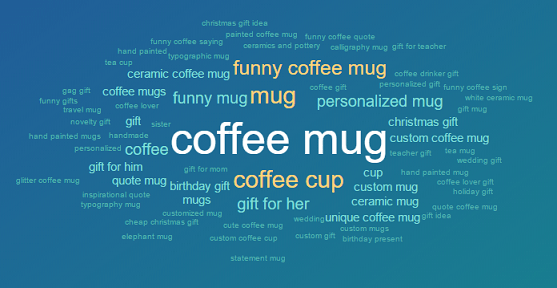Imagine the aroma of freshly brewed coffee wafting through the air, stimulating your senses and pulling you into a world of enticing flavors. In this article, we embark on a journey of discovery, delving into the captivating universe of coffee words. From the rich and earthy notes of a robust blend to the delicate hints of floral undertones, we explore the language that truly captures the essence of this beloved beverage. So, sit back, grab a cup of your favorite brew, and join us as we unravel the fascinating tapestry of words that encompass the world of coffee.
1. The Language of Coffee
Coffee, a beloved beverage enjoyed worldwide, has a rich and diverse vocabulary associated with it. From the origins of coffee words to the evolution of coffee language, understanding and appreciating the terminology adds depth to the coffee experience. Whether you are a coffee aficionado or just starting your journey into the world of coffee, exploring the language of coffee can enhance your appreciation for this drink.
1.1. The Origins of Coffee Words
The origins of coffee words can be traced back to the regions where coffee cultivation first began. Words like “arabica” and “robusta” stem from the varieties of coffee plants that originated in Arabia and sub-Saharan Africa, respectively. As the popularity of coffee spread across the world, words from different languages, such as “espresso” from Italian and “mocha” from Arabic, became part of the coffee lexicon. Understanding the historical roots of coffee words can provide insight into the cultural significance and global influence of this beloved beverage.
1.2. The Significance of Coffee Terminology
Coffee terminology serves as a means of communication among coffee enthusiasts, professionals, and consumers. From baristas discussing the flavor profiles of different coffee beans to customers communicating their coffee preferences, a shared language enhances the coffee community. Moreover, the terminology used in coffee education and certification programs helps standardize the industry and ensure consistency in quality. By familiarizing yourself with coffee terminology, you can navigate the coffee world more effectively and engage in meaningful conversations about coffee.
1.3. The Evolution of Coffee Language
Over time, coffee language has evolved and expanded to accommodate the changing preferences and trends in the industry. As new brewing techniques, flavor profiles, and coffee drinks emerged, so did the corresponding vocabulary. Words like “single origin,” “third wave coffee,” and “latte art” have become commonplace in the coffee world, reflecting the ever-evolving nature of the industry. By staying informed about the latest coffee language trends, you can keep up with the dynamic coffee landscape and adapt your coffee preferences accordingly.
2. Categorizing Coffee Vocabulary
The vast coffee vocabulary can be organized into several categories that encompass different aspects of the coffee experience. These categories include coffee bean descriptors, brewing techniques and methods, coffee tasting notes, and coffee drinks and recipes. By understanding these categories, you can navigate the language of coffee more effectively and explore the nuances of each aspect.
2.1. Coffee Bean Descriptors
Coffee bean descriptors encompass the characteristics and qualities of different coffee beans. These descriptors include roasting levels, flavor profiles, aroma and fragrance, and strength and body. Each of these descriptors provides valuable information about the coffee bean’s taste, aroma, and overall experience. By familiarizing yourself with coffee bean descriptors, you can better understand and appreciate the diversity of coffee beans available.
2.2. Brewing Techniques and Methods
The brewing techniques and methods used to prepare coffee greatly impact its taste and flavor. Different brewing techniques, such as drip brewing, French press, espresso, cold brew, and pour-over, have their own unique characteristics and require specific equipment and skills. Understanding these brewing techniques and methods allows you to experiment and find the brewing method that suits your taste preferences. Each brewing method has its own vocabulary that relates to the process and outcome of the coffee brewed.
2.3. Coffee Tasting Notes
When tasting coffee, professionals and enthusiasts use tasting notes to describe the flavors and sensory experience. These tasting notes include flavor descriptors, acidity, sweetness, bitterness, and mouthfeel. By articulating the nuances of each coffee’s flavors and characteristics, tasting notes allow coffee lovers to appreciate the complexity of the bean and enhance their sensory skills. Exploring the language of coffee tasting notes can deepen your understanding and enjoyment of the sensory aspects of coffee.
2.4. Coffee Drinks and Recipes
Coffee drinks and recipes encompass a wide range of beverages prepared using coffee as the main ingredient. From the classic espresso-based drinks like cappuccino and macchiato to milk-based drinks like latte and mocha, the language of coffee drinks allows us to order and discuss our preferred beverages. Additionally, specialty coffee recipes such as affogato and espresso martinis offer unique twists and combinations that showcase the versatility of coffee. By familiarizing yourself with the language of coffee drinks and recipes, you can explore new flavors and expand your coffee repertoire.
3. Coffee Bean Descriptors
When exploring the language of coffee, understanding coffee bean descriptors is essential. These descriptors provide valuable information about the characteristics and qualities of different coffee beans, helping you choose the perfect cup of coffee to suit your taste preferences. The key coffee bean descriptors include roasting levels, flavor profiles, aroma and fragrance, and strength and body.
3.1. Roasting Levels
Roasting levels refer to the degree to which coffee beans are roasted. Light roast beans are light brown and retain more of their original flavors and acidity. Medium roast beans have a balanced flavor profile, with a slightly darker color and a caramelized sweetness. Dark roast beans have a rich, deep flavor with a hint of bitterness and a dark brown color. Each roasting level brings out different characteristics in the beans, resulting in varied taste experiences.
3.2. Flavor Profiles
Flavor profiles describe the taste characteristics of coffee beans. These profiles can range from fruity and floral to nutty and chocolaty. Some coffee may have a bright acidity, while others may be more mellow. Flavor profiles often reflect the region in which the coffee is grown, as well as the specific cultivation and processing methods used. By understanding flavor profiles, you can choose coffee beans that align with your preferred tastes.
3.3. Aroma and Fragrance
The aroma and fragrance of coffee beans play a significant role in the overall coffee experience. Aroma refers to the scent of the coffee beans when they are ground, while fragrance refers to the scent of the brewed coffee. The aroma and fragrance can vary greatly, ranging from floral and citrusy notes to earthy and spicy aromas. Paying attention to the aroma and fragrance of coffee beans can enhance your sensory experience and provide insights into the bean’s flavor profile.
3.4. Strength and Body
Strength and body describe the intensity and texture of coffee. Strength refers to the coffee’s perceived overall power and boldness, while body refers to its physical sensation on the tongue and mouth. Some coffee may have a full-bodied, robust texture, while others may be lighter and more delicate. Understanding the strength and body of coffee beans allows you to choose coffee that suits your taste preferences and desired drinking experience.



